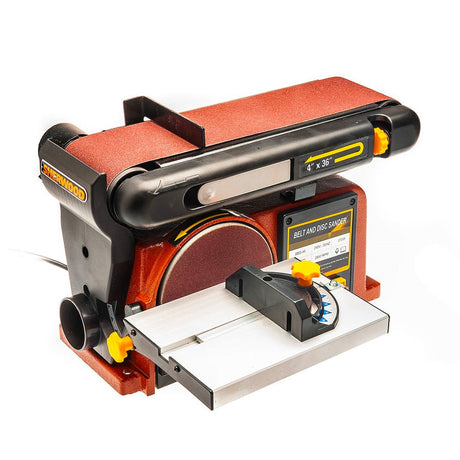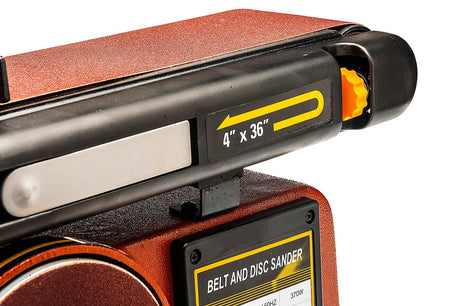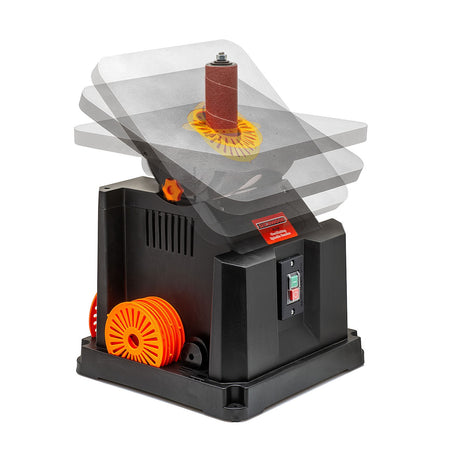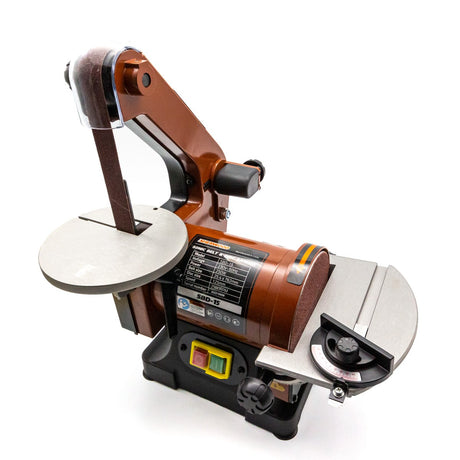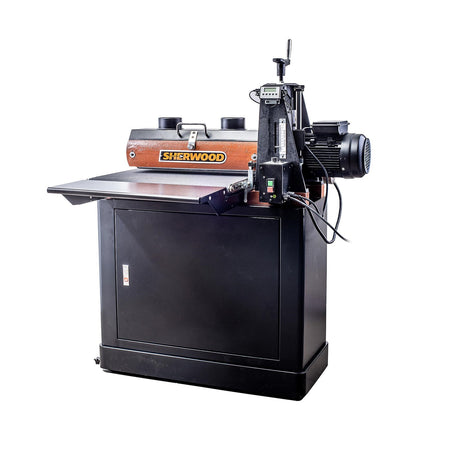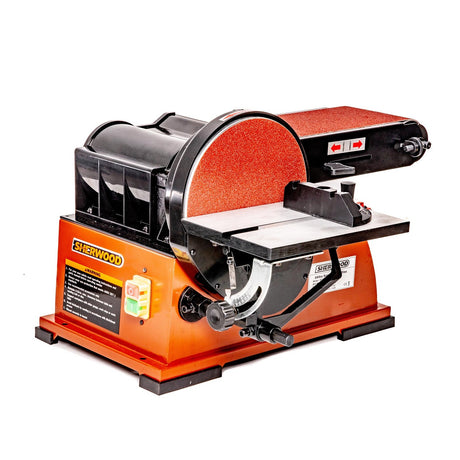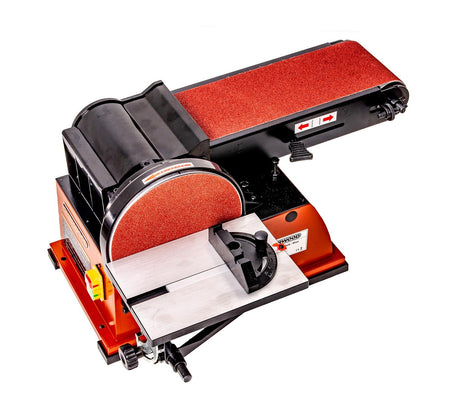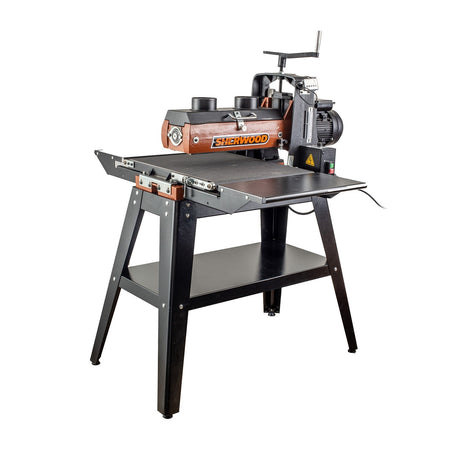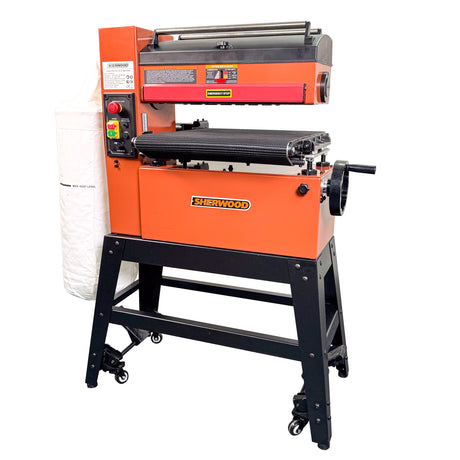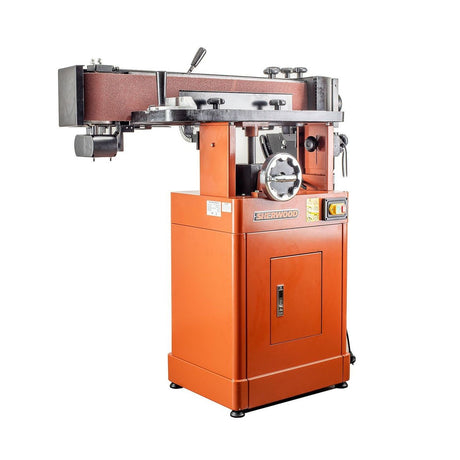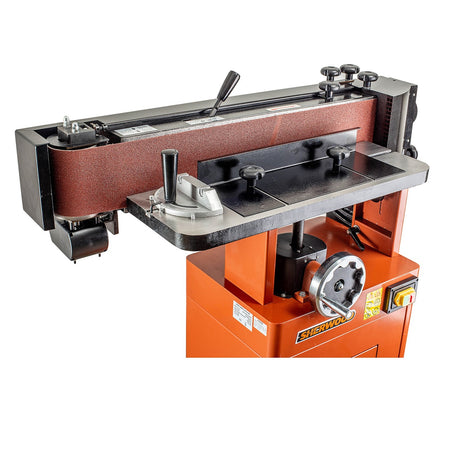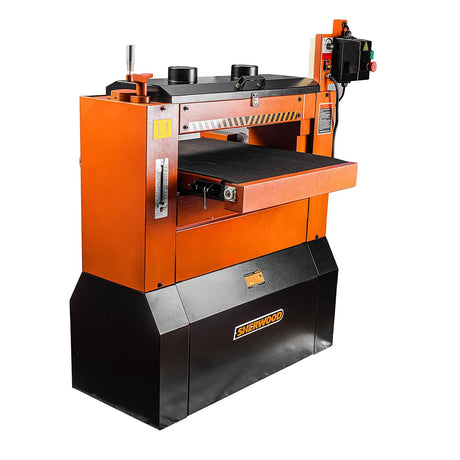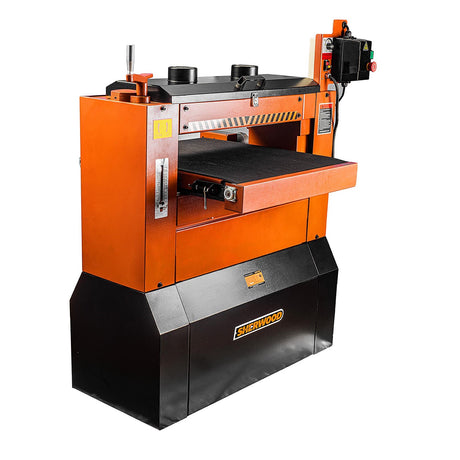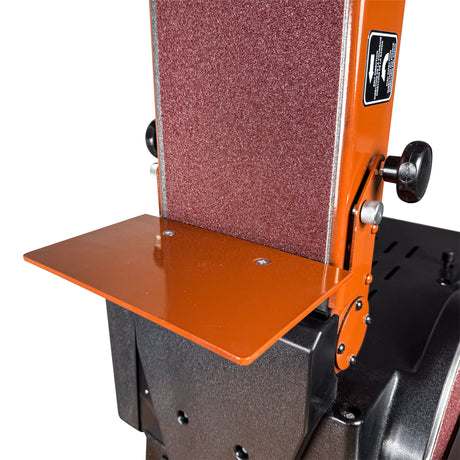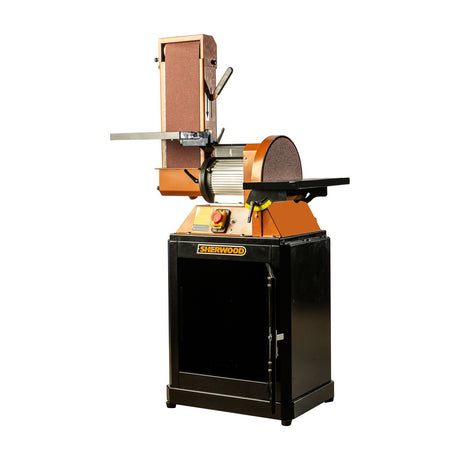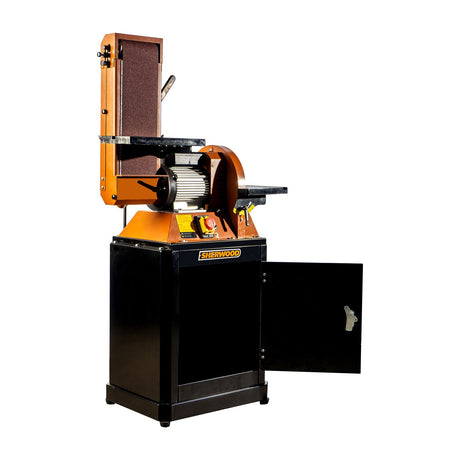Sherwood
Sherwood Benchtop Oscillating Spindle & Belt Sander 450W
$382.00$449.00Unit price /UnavailableVery low stock (5 units)Sherwood
Sherwood 4 x 6in Benchtop Belt and Disc Sander 375W
$212.00$249.00Unit price /UnavailableIn stockSherwood
Sherwood Benchtop Oscillating Spindle Sander 450W Cast Iron Table
$379.00$449.00Unit price /UnavailableIn stockSherwood
Sherwood 1 x 5in Benchtop Vertical Belt and Disc Sander Linisher 250W
$159.00$199.00Unit price /UnavailableIn stockSherwood
Sherwood 20in Drum Sander with Cabinet Stand Thickness Sander 1500W 2HP Variable Speed
$1,889.00$2,099.00Unit price /UnavailablePre-OrderSherwood
Sherwood 6 x 9in Benchtop Belt and Disc Sander 750W Vertical & Horizontal Rotating Belt
$467.00$549.00Unit price /UnavailableVery low stock (2 units)Sherwood
Sherwood 16in Drum Sander with Open Stand Thickness Sander 1125W 1.5HP Variable Speed
$1,619.00$1,799.00Unit price /UnavailablePre-OrderSherwood
Sherwood 18in Wide Drum Sander 1800W Variable Speed with Open Mobility Stand
$1,979.00$2,199.00Unit price /UnavailablePre-OrderSherwood
Sherwood 10in Benchtop Drum Sander 1100W 1.5HP
$1,099.00$1,399.00Unit price /UnavailableIn stockSherwood
Sherwood Oscillating Belt Sander 6in 2200W Edge Sander with Cabinet Stand
$1,529.00$1,699.00Unit price /UnavailableIn stockSherwood
Sherwood 26in Drum Sander Thickness Sander 2250W 3HP Variable Speed
$3,250.00$3,699.00Unit price /UnavailableVery low stock (1 unit)Sherwood
Sherwood 6 x 10in Benchtop Belt and Disc Sander 800W
$674.00$749.00Unit price /UnavailableIn stockSherwood
Sherwood 6 x 12in Belt and Disc Sander with Cabinet Stand 1100W
$1,124.00$1,249.00Unit price /UnavailableVery low stock (1 unit)Sherwood
Sherwood Pedestal Oscillating Spindle Sander 750W Cabinet Stand
$2,799.00$3,299.00Unit price /UnavailableIn stockSherwood
SAMPLE - Sherwood 6 x 12in Belt and Disc Sander with Cabinet Stand 1100W
$919.00$1,249.00Unit price /UnavailableVery low stock (1 unit)
Choosing the Right Sander for Efficient and Precise Woodworking
When it comes to smoothing surfaces, removing material, or preparing timber for finishing, a reliable sander can make all the difference. Sherwood sanders are engineered for woodworkers who demand precision and durability. Ranging from benchtop drum sanders to wide belt and oscillating edge sanders, each machine is designed with a specific use case in mind — from fine finishing to heavy stock removal.
For professional workshops and dedicated enthusiasts, investing in a quality sander not only saves time but significantly improves the finish quality of your projects. Features such as adjustable tables, variable speed control, and dust extraction ports enhance the overall user experience, providing consistency and safety during extended use. Many Sherwood models are built with cast iron or heavy-duty steel construction, ensuring vibration-free operation and long-term reliability.
Understanding the difference between drum, edge, and belt sanders is key to selecting the right tool. Drum sanders are ideal for flattening wide boards and panels without the risk of tear-out that planers might cause. Oscillating edge sanders excel at shaping and smoothing edges and curves, especially on awkward or irregular shapes. Wide belt sanders offer high-throughput sanding with superb flatness and are typically used in high-production settings.
Proper sanding technique includes working through progressively finer grits, maintaining steady pressure, and allowing the machine to do the work without forcing the timber through. Regular maintenance — such as cleaning the belt, checking tracking, and replacing worn abrasives — ensures peak performance and extends the lifespan of the machine. Whether you're levelling cabinet doors, prepping veneered panels, or refining joinery, using the right sander can elevate the quality of your craft.
FAQs
What type of sander is best for flattening wide panels?
Drum sanders are typically the best option for flattening wide panels. They provide consistent sanding over large surfaces and are less aggressive than planers, reducing the risk of tear-out, especially on figured or softwoods.
How does an oscillating edge sander work?
An oscillating edge sander combines a horizontal sanding belt with a vertical oscillating motion. This reduces heat buildup and minimises wear on the abrasive, making it ideal for sanding curves, edges, and end grain more efficiently.
Can I use a wide belt sander for fine finishing?
Yes, wide belt sanders can be used for fine finishing when fitted with higher grit abrasives. They offer a very flat and smooth surface, especially on large panels or doors, and are common in cabinetmaking and production environments.
What maintenance does a stationary sander require?
Regular maintenance includes checking and adjusting belt tracking, cleaning dust build-up, replacing worn belts or drums, lubricating moving parts, and ensuring the dust extraction system is functioning properly.
How important is dust extraction when using sanders?
Dust extraction is crucial for both health and machine performance. Fine sanding dust can clog machinery and pose respiratory hazards. Most professional sanders include integrated dust ports for connection to dust collectors or shop vacs.
Is there a difference between drum and belt sanders?
Yes, drum sanders use a rotating drum wrapped in abrasive to sand the surface, offering precision and control, especially for flattening panels. Belt sanders, especially wide belt types, are more aggressive and are better for rapid material removal and high-volume applications.
What safety tips should I follow when using a stationary sander?
Always wear appropriate PPE, such as eye and ear protection and a dust mask. Keep hands clear of the abrasive surfaces, secure workpieces properly, and never operate the machine without the dust collection running. Check for loose clothing or jewellery that could catch in the machinery.
Can edge sanders be used for internal curves?
Some edge sanders come with tilting tables or curved platens designed specifically for sanding internal curves and irregular shapes. Check the specifications of your model to see if it supports this feature.
What grit sandpaper should I use for finishing?
For finishing, start with 120–150 grit and progress up to 220 or even 320 grit depending on the timber and the desired smoothness. Always move through grits progressively to avoid deep scratches left by coarser grits.


